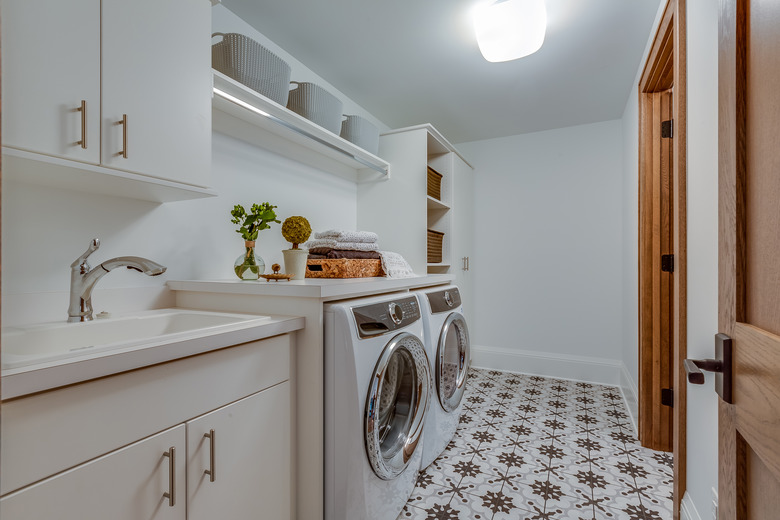How To Pressure-Test Plumbing
We may receive a commission on purchases made from links.
Filling plumbing pipes with pressurized air is a quick and effective way to inspect for leaks in a new installation of water pipes and drain-waste-vent (DWV) systems. You can also air-pressure-test existing pipes, but pumping the DWV system full of pressurized air becomes impractical after installation of the plumbing fixtures and connection to the sewer. It's easier and often just as effective to test the water pressure instead.
How to Pressure-Test New Plumbing
1. Cap All Stub-Outs
Cap all the stub-outs connected to the system you're testing. For a DWV system, this usually means gluing a cap to each stub-out with plastic pipe cement. If you're testing a water system, you may have to glue or solder the caps, depending on the type of pipes in your system. You'll cut off the caps when the test is complete.
2. Connect an Air Compressor Hose and Pressure Gauge
Install or find a fitting that allows you to connect an air compressor hose and pressure gauge to the system. In waste systems, you usually do this by screwing an adapter to a cleanout fitting and installing a tee. For water systems, it usually works to leave one stub-out uncapped and install a tee and adapter for the hose and gauge on that stub-out.
3. Turn on the Compressor
Turn on the compressor and fill the pipes with air until the gauge reaches the test pressure reading. For water systems, this reading is usually around 80 psi. For drain systems, it's much lower — about 5 psi.
4. Turn the Compressor Off
Turn off the compressor and leave the system pressurized for 15 minutes. Any reduction in pressure during that time signifies the presence of a leak.
How to Air-Test Existing Plumbing
1. Turn Off the Water Main and Drain the System
Air-test a system of water pipes by turning off the main shutoff valve and draining the water from the system.
2. Turn Off All Faucets
Turn off all the faucets after all the water has drained.
3. Screw on a Pressure Gauge and an Adapter
Screw a pressure gauge to one of the faucets — usually a laundry-room faucet or outdoor faucet with a threaded spout. Screw an adapter to another faucet that allows you to connect a compressor hose.
4. Pressurize the System
Charge the system to about 60 psi and leave it charged for 15 minutes. The system has no leaks if the pressure gauge remains stationary.
How to Water-Test Existing Plumbing
1. Screw a Pressure Gauge to a Suitable Faucet
Test a water system without draining it by locating an outdoor or laundry faucet to which you can attach a water pressure gauge. Screw the gauge to the faucet spout and open the faucet all the way.
2. Shut Off the Water Main
Turn off the main shutoff valve for the house.
3. Check the Gauge for Pressure Changes
Watch the gauge for 15 minutes. If it moves, there's a leak in a pipe or in a faucet. Check the faucets, and if none of them are dripping, the leak is in a pipe.
Tip
If you don't want the pressure-test to include the faucets or toilet fill valves, turn off the shutoff valves for these fixtures.
Plumbers often use smoke to test existing DWV systems. They block the drains and the path to the sewer with a balloon, fill the system through the roof vent to a pressure of 5 psi, and then block the roof vent. Any leaks in the system are easy to detect because smoke pours out of them.
